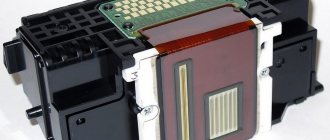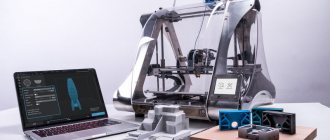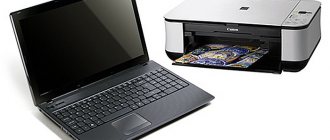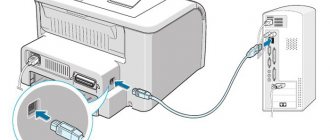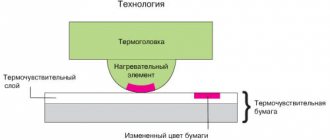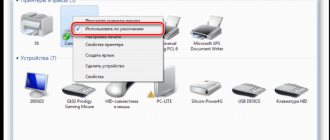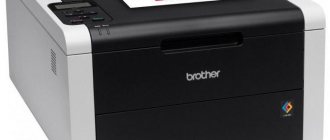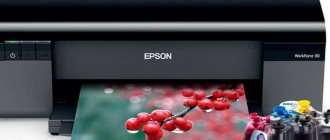FDM
Fused Deposition Modeling (FDM), also known as Filament Fused Fabrication (FFF), is the most popular and widespread type of 3D printing.
A standard FDM device works like a hot glue gun controlled by a robot, which is not surprising, since the development of FDM technology once began with experiments with hot glue. The plastic rod is pushed through a hot nozzle, where it melts, and when it emerges, it is laid out in layers. The process is repeated over and over again until the finished 3D object appears.
The only difference is that 3D printers do not use hot glue sticks, but plastic filament wound on spools.
The most common materials for FDM (FFF) are ABS and PLA plastics.
Plastic thread, also known as filament, is produced in such a form so that it can easily melt at a given temperature, but harden very quickly - after cooling by just a couple of degrees. This is what makes it possible to print 3D products with complex geometries with high precision.
Simply put, 3D printing differs from traditional 2D printing only in that it is repeated over and over again, creating layer after layer, one on top of the other. After all, thousands of layers form a 3D object.
FDM printer using the example of MakerBot Replicator 2
What is 3D printing and how does a 3D printer work?
3D printing or additive manufacturing technologies have gained popularity quite recently, although the first methods appeared in the mid-80s of the last century. The purpose of 3D printers is still a mystery to many people, although there is actually nothing complicated: these are real automated factories, capable of independently producing products of almost any shape.
3D printers are used for a wide variety of tasks. Initially, 3D printing technologies were called “rapid prototyping” and were used, as you might guess, for the production of prototypes and mock-ups. Current, improved technologies and materials make it possible to print not just models, but completely functional products suitable for everyday use: titanium implants and gas turbine blades, plastic toys, souvenirs and housings for household appliances and gadgets, ceramic dishes and even concrete building structures. The main advantage of 3D printing over traditional production technologies is the principle of “direct production”: finished products are printed directly from digital models, while for the same injection molding it is necessary to first make expensive equipment.
Principle of operation
There are a great variety of 3D printing methods, but they are all united by a common principle for processing digital models: in order for a 3D printer to understand a complex three-dimensional structure, the digital model is divided into cross sections, the thickness of each of which corresponds to the thickness of one layer. Imagine a stack of paper, where each sheet acts as a printed layer: if each sheet is cut out according to an individual template and folded back into a stack, you will get a three-dimensional object of a given shape. Actually, this is exactly how 3D printers using LOM technology, manufactured by Mcor, work by cutting and gluing sheets of paper.
The difference lies in the methods of making the layers and the materials used. Thus, stereolithography (SLA) uses liquid photopolymer resins cured by a laser, and selective laser sintering (SLS) uses the same lasers to sinter particles of various powders - metal, polymer or ceramic. The most widely used technology is “modeling by layer-by-layer deposition”, known by the abbreviations “FD” and “FFF”. The popularity of this method is explained by the simplicity and low cost of both the printing devices themselves and consumables. All kinds of plastics and polymer-based composites are used as raw materials, and FDM printers are the most simplified machines with numerical control.
The material used is a thin plastic thread or “filament”, and the role of the print head is played by an “extruder”, consisting of a simple gear mechanism that pushes a plastic rod into a heated tube (“hotend”) and squeezes the molten plastic through a nozzle. The molten thread can be drawn one layer after another until a three-dimensional physical model is formed. All you need is a device that will set the head in motion according to a given algorithm.
This device is called a 3D printer. The simplest desktop 3D printers consist of a chassis that serves as the basis for guides along which the print head and/or the platform on which the construction is carried out moves. A typical office printer that prints on a sheet of paper requires the ability to position in two dimensions: typically, the head moves from side to side, and the sheet of paper itself is gradually pulled out, line by line. If we are building a three-dimensional model, then it is necessary to add a third dimension to the positioning mechanism - so that we can navigate not only by width and length, but also by height.
The head and platform are mounted on guides and driven by electric motors. The order of operation of the electric motors, which determines the movement of the head and the supply of material, is embedded in a special program code (the so-called G-code). The code is generated automatically using special programs called “slicers”: such applications take three-dimensional virtual models drawn in graphic editors, and then divide them into layers and convert each layer into a series of commands necessary to build a physical analogue. The head gradually traces each layer, extruding molten plastic onto the platform or previously applied layers. After the end of the layer, the head rises (or, conversely, the platform lowers) to the height of one layer, and the process begins again, only using the next template.
Typically, the thickness of the filament and the layers themselves is a fraction of a millimeter: the typical nozzle diameter varies from 0.3 to 0.8 mm, while the layer thickness ranges from 50 to 300 microns. For comparison, the thickness of a human hair ranges from 80-100 microns. Obviously, printing with a thin filament takes quite a long time. Indeed, a typical production cycle can easily take hours, or even exceed a day: everything depends on the selected nozzle diameter, the thickness of individual layers and the dimensions of the product itself. The higher the thickness of the thread and layers, the less time it will take to print, but the quality of the surfaces will be lower.
Consumables
One of the most attractive factors of FDM printing remains the huge variety of relatively inexpensive consumables. The two most popular plastics are ABS (acrylonitrile butadiene styrene) and PLA (polylactide). Absolutely all of us are familiar with the first option - this is the most widely used industrial plastic, from which your favorite coffee grinder, ballpoint pen, smartphone protective case and many other household items are made. The second is an environmentally friendly alternative, being an organic, biodegradable polymer made from corn or sugar cane. Even though PLA is not so durable, it can be safely thrown into the trash, since under the influence of the environment, in a few months, polylactide will turn into harmless compost.
But if you wish, you can print with other materials: such popular thermoplastics as polycarbonates and nylon. Filament can even be made at home using empty PET containers as raw materials: this material is used to make soda and beer bottles.
There are also elastic options that imitate rubber, such as NinjaFlex. And if the “plastic” look is not to your liking, then you can try PLA-based composites with the addition of various fillers: sandstone, metal dust and even wood. Of course, the physical and mechanical characteristics of such composites are incomparable to real stone or steel, but if instead of external similarity you need strength and wear resistance, then you can always try special composites reinforced with carbon fiber.
All that remains is to choose the 3D printer you like, which can be difficult due to the growing variety: serious designers can choose relatively large devices with two or three print heads, while for beginners there are many easy-to-use models with relatively fast characteristics available, but with a high level of automation and quite affordable prices. Some of the most budget devices can be purchased for only $200-300, and prices for filaments start at $10 per kilogram.
For those who want to know more
- Why 3D printers will come to every home or how I first used a 3D printer - my first experience with a 3D printer: pitfalls and first skills
- 12 useful things that can be printed on a 3D printer - where to start if you have a 3D printer
- How 3D printers are changing our lives - what we will print on 3D printers in the near future
- 7 gadgets that everyone should try - what else is worth trying personally besides 3D printers
- 10 solar-powered robots that you can build together with your children - simple and affordable construction kits that allow you to introduce children to modern technologies
Stereolithography
Stereolithography uses light to “grow” objects in a container of photopolymer resin. As with other 3D printing technologies, the product is formed layer by layer, here by curing a liquid photopolymer with light.
Stereolithography differs from FDM in that it produces more monolithic prints, even with the same specified layer thickness.
In the photo: FDM and SLA prints, the layer of both models is 0.1 mm.
The point is the difference in technology - photopolymer illumination produces more accurate layers than molten filament squeezed out of the nozzle of an FDM printer.
SLA and DLP are two types of stereolithography. SLA - laser stereolithography, DLP - digital projection. The difference between them is that in SLA the light source is a laser, while in DLP it is a projector.
Regardless of the technical features, the operating principle of SLA and DLP devices is similar. To start printing, you need to lower a special build platform into a container with liquid photopolymer resin.
The platform stops at a height of one layer from the bottom of the container. The printer's light source is illuminating. The liquid polymer, when exposed to light, becomes solid and adheres to the building platform. After this, the platform rises to the height of another layer and the process repeats.
SLA printer using Formlabs Form 2 as an example
SLA gives smoother surfaces compared not only to FDM, but also to DLP, which we will discuss later.
This happens because DLP projects layers with a picture of pixels, and the laser beam in SLA moves continuously, which gives a smooth, non-pixelated layer.
DLP uses a projector for the same purposes, and LED DLP uses an LCD display with ultraviolet backlighting. In these designs, light is projected onto the resin over the entire layer area at the same time, which gives a speed advantage when printing large objects with 100% infill is required - full layer exposure occurs faster than in SLA.
But when printing small or hollow objects, SLA is faster, since the intensity of illumination by the laser beam, and therefore the polymerization speed, is higher.
DLP printer using the example of SprintRay MoonRay S
Applications of a 3D printer
3D printing technology has opened up enormous possibilities for manufacturing in almost all the most important areas of human life. What can be done with 3D printers, and where are they used?
- Weapons production. Do you think a plastic gun won't work? It will happen again! This was proven by a US citizen who brought a full-fledged plastic firearm into the airport, which could not be detected by metal detectors. And in 2012, Defense Distributed introduced a weapon that anyone could 3D print at home, given the appropriate model. After this, the United States passed a law banning the use of three-dimensional technologies in the manufacture of weapons.
- Building a house has now become even easier: 3D technologies have also entered the construction industry. The first house was "printed" in 2014, and the entire building, produced using 3D printing, was presented to the general public in 2021.
- In manufacturing, 3D printing can significantly speed up the process of manufacturing parts.
- Test 3D printers are currently capable of reproducing human organs. To do this, cells of the desired type are applied to a special biological base. But this technology is still at the development stage.
- But in the field of prosthetics manufacturing, 3D printers are already actively used. With their help, various implants are produced: particles of bones and cartilage tissue.
- 3D printers are also involved in the creation of expensive equipment: for example, the Polecat unmanned aircraft was almost entirely manufactured using 3D technologies.
As you can see, the answer to the question of what can be done with a 3D printer is quite extensive. Most likely, this area will continue to actively develop and will bring many advantages to human civilization. The possibilities of a 3D printer are almost limitless.
SLS
The main advantage of the technology over FDM and SLA is that SLS printing does not require the creation of supporting structures, because the support material is the material surrounding the model - this allows you to print products of any shape, with any number of internal cavities, and fill the entire working volume of the printer with them. SLS printers handle a wide range of materials, and their prints are stronger than most FDM or stereolithography prints.
Due to their strength characteristics, parts printed on SLS printers can be used for practical purposes, and not just as prototypes and decorative elements.
To create an object, the device directs a laser at a layer of fine powder, fusing the particles together to form a layer of the product. Then, the device scatters the next portion of powder onto the surface of the finished layer and levels it out, and the laser melts it, creating the next layer of the product. The procedure is repeated until printing is completed. SLS printers have one downside - their cost. They are very expensive compared to FDM and SLA/DLP. This is due to the price of the high-energy lasers required for such printing. In principle, the cost of even the cheapest SLS printers recently started at $200,000. However, some companies are currently working to make this technology more affordable, so there is a chance that they will be able to purchase an SLS printer in the near future Even amateurs can afford it. One example is the Polish company Sinterit.
SLS printer using the example of Sinterit Lisa Pro
The model removed from the SLS printer does not require removal of supports and can be used without post-processing; it only needs to be cleaned of excess powder.
Polyjet
The main advantage of Polyjet technology is its multimateriality - many Polyjet printers are capable of printing an object with a large number of different materials at the same time, which allows you to create products consisting of sections with different mechanical and optical properties, that is, different hardness and color. This is proprietary technology ]Stratasys[/anchor].
Example: a Stratasys printer and sneakers printed on it.
Polyjet 3D printers spray tiny droplets of photopolymer resin onto a surface and cure them with ultraviolet light.
This process is repeated until the object is created. Unlike FDM printers, Polyjet devices can deposit material from multiple nozzles simultaneously.
